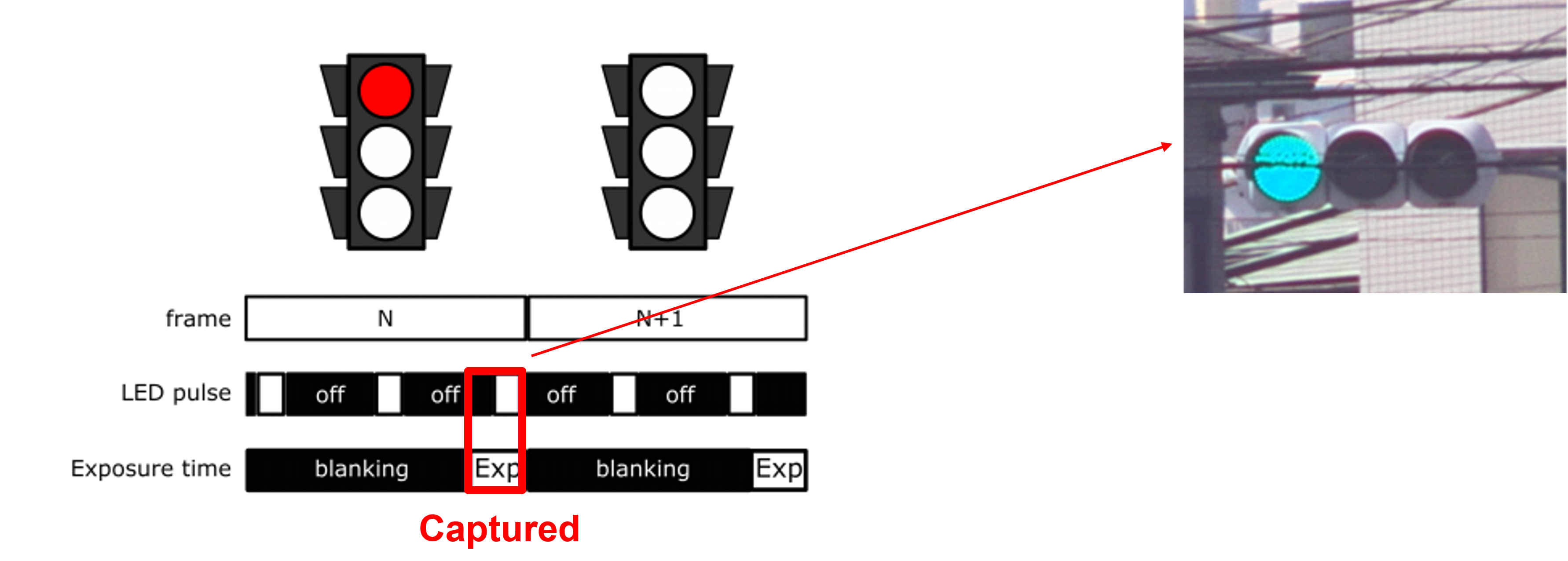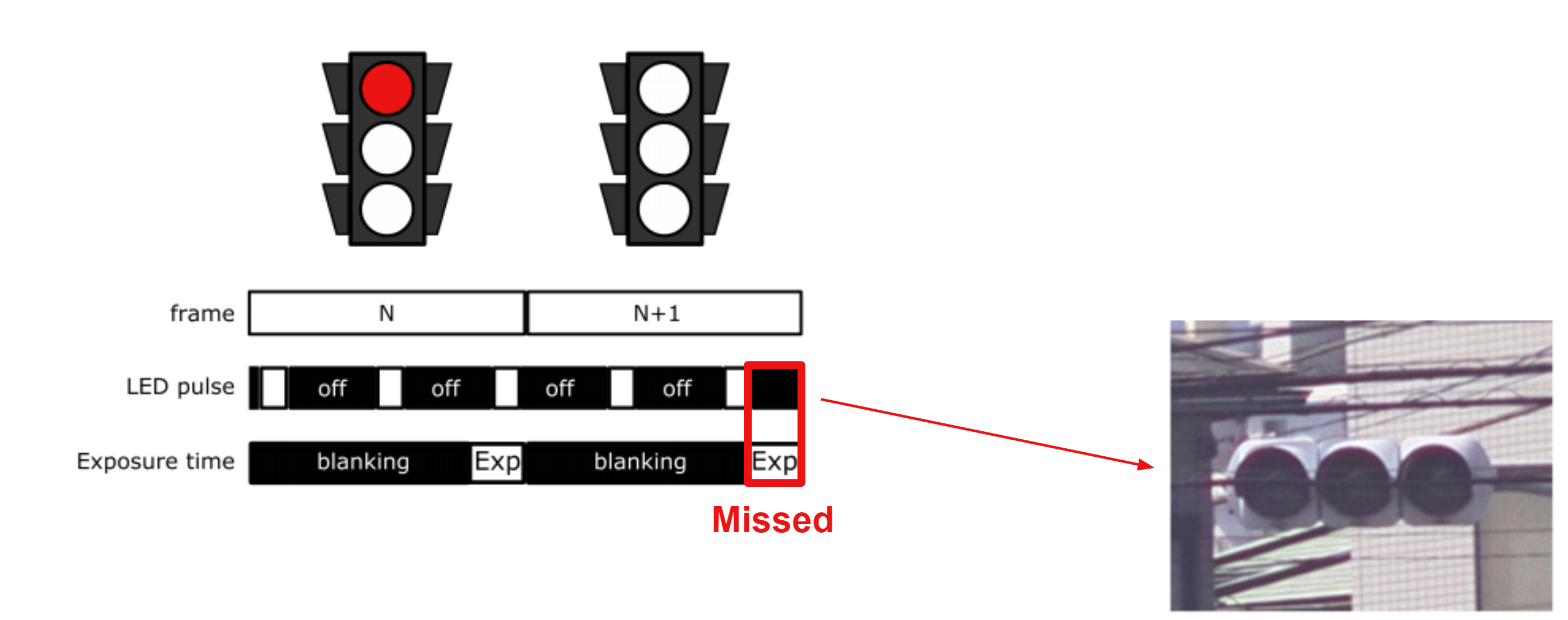1. What is the LED Flicker Mitigation (LFM)?#
1.1. What is LED Flicker?#
LED flicker is a phenomenon where an LED light source appears to flicker (repeatedly turning on and off) when captured by a camera. In recent years, LED light sources have been increasingly used in applications such as traffic signals, electronic display boards, headlights, and tail lights, leading to a higher risk of LED flicker occurring.
LED flicker not only appears unnatural when viewing videos by humans but can also have a significant impact when performing sensing (perception of the surrounding environment) using images. A typical example is Traffic Light Recognition (TLR).
TLR relies on color information and can be performed exclusively using cameras among the major automotive sensors (camera, LiDAR, Radar). However, when LED flicker occurs, it becomes challenging to determine which color signal is lit, posing a significant obstacle to TLR.
1.2. The Principle of LED Flicker Occurrence#
Let me explain the principle behind the generation of LED flicker:
LED flicker occurs due to the relationship between the emission timing of LEDs that are pulse-width modulated (PWM) and the exposure timing of the CMOS image sensor, which is the camera’s imaging element.
As shown in the Fig. 1.24, if the LED emits light within the CMOS image sensor’s exposure time, the camera can correctly recognize the color of the signal.

Fig. 1.24 In the case LED is captured#
On the other hand, as shown in Fig. 1.25, if the LED does not emit light within the CMOS image sensor’s exposure time, the camera cannot capture the color of the signal.

Fig. 1.25 In the case LED is missed#
Therefore, due to the relationship between the exposure timing of the CMOS image sensor and the emission timing of the LED, there is a mixture of frames in which the emission is captured and frames in which it is not, resulting in the perception of flickering light. This is the cause of LED flicker.
1.3. The Principle of LED Flicker Mitigation#
Based on the aforementioned principle, it is understood that LED flicker can be reduced by setting the exposure time of the CMOS image sensor longer than the LED’s emission cycle. The LED emission cycle varies depending on the model and region, but as an example, when considering a frequency of 90Hz as specified in EN12966, setting the CMOS image sensor’s exposure time to 11 milliseconds (1/90 second) allows it to capture at least one emission within the exposure time.
Note
Please note that the above-mentioned measures do not guarantee the complete elimination of LED flicker. Depending on the LED’s emission cycle, the number of times LED emissions are included within the exposure time of the CMOS image sensor may vary. In such cases, there may be variations in the brightness of the LED. However, by setting the exposure time to be longer than the LED’s emission cycle, LED emissions will not be missed or lost.
1.4. LED Flicker Mitigation with TIER IV Cameras#
Through the discussion so far, it has been established that LED flicker can be reduced by setting the exposure time of the CMOS image sensor longer than the LED’s emission cycle. However, existing CMOS image sensors faced an issue where increasing the exposure time led to overexposed images. This problem was due to the photodiodes of the CMOS image sensor saturating over prolonged exposure periods.
In contrast, the image sensors used in TIER IV cameras have undergone design improvements that significantly enhance their saturation signal levels. Consequently, these cameras can capture images with extended exposure times without suffering from overexposure.